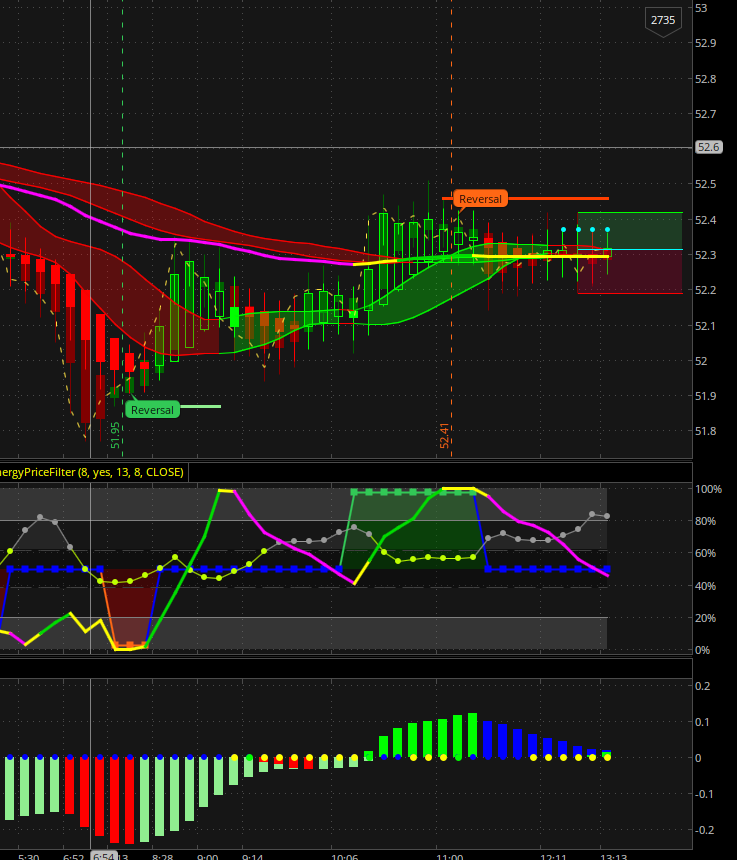Comparative Statement: Meaning, Importance and Techniques of Presenting Financial Statements

Business owners use the comparative report to make strategic business decisions.

In the above example, if the results were presented for a single accounting period, it is a common size statement. Common size statements are useful in comparing results with similar companies. To prepare common size statements, you need to have the original financial statements of the company or companies you want to compare. Then, you need to divide each item by the common base and multiply by 100 to get the percentage. For example, if a company has sales of $100,000 and cost of goods sold of $60,000, its common size income statement would show sales as 100% and cost of goods sold as 60%. Common size statements are financial statements that express all items as a percentage of a common base, such as sales, assets, or equity.
What is the difference between Comparative and Common Size Statement?
Net income, however, only declined by 1 percent from 30 percent in the prior year to 29 percent in the current year because interest expense dropped by 1 percent, offsetting the 2 percent increase in salaries expense. However, a simple tool like Microsoft Excel can be quite handy in making the process easier and faster. The same formula can be copied and replicated in each income statement line, making the calculations much faster. In Figure 5.21, you can see the formulas used to create Clear Lake Sporting Goods’ common-size income statement in Excel. Notice that the $ can be inserted to anchor a cell reference, making it easier to copy and paste the same formula onto many lines or columns. It assists the management in drafting future plans and forecast trends which is achieved by analyzing the profitability and operating efficiency of a business over time.
It often is insightful to compare a firm to the best performing firm in its industry (benchmarking). To compare to the industry, the ratios are calculated for each firm in the industry and an average for the industry is calculated. Comparative statements then may be constructed with the company of interest in one column and the industry averages in another.
It can also help you understand fluctuations caused by seasons so that you can make better-informed business decisions. Investors also use comparative balance sheets to do a comparative analysis of financial ratios. When the comparative statements of two or more years of a firm are presented and compared, difference between comparative and common size statement it is known as inter-period comparison or intra-firm comparison. However, when the comparative statements of two or more firms are compared over a number of years, then it is known as an inter-firm comparison. A common size analysis can also give insight into companies’ different strategies.
Summary- Comparative vs Common Size Statement
The financial statements are the final statements prepared by a business to compute the profitability for a particular period and the financial position on a particular date. The financial statements generally include the balance sheet, income statement, cash flow statement, change in equity statement, fund flow statement, comparative statement, etc. All these statements are available for the stakeholders of the business to analyse the business and it’s performance. Common Size Statements are those statements where the items are displayed as percentages of a common base figure instead of absolute figures. It is helpful for proper analysis between companies (inter-firm comparison) or between time periods of the same company (intra-firm comparison). In these statements, the relationship between items present in financial statements and common items like balance sheet total and net sales are highlighted in percentages.

A comparative balance sheet is a side-by-side comparison of the entire balance sheet report of a current accounting period and a previous accounting period. It is important to add short-term and long-term debt together and compare this amount to the total cash on hand in the current assets section. This lets you know how much of a cash cushion is available or if a firm is dependent on the markets to refinance debt when it comes due. Explain the usefulness of trend percentages in interpretation of financial performance of a company.
Key Differences Between Horizontal and Vertical Analysis
The percentage change simply allows you to see increases or decreases in figures expressed as a percentage. During an analysis of comparative balance sheets, these tools add alternative angles to consider. This guide will help you understand what a comparative balance sheet is, its advantages, and how to use it to do a comparative analysis. See the financial statement definition, and study the purpose of financial statements. Vertical Analysis refers to the analysis of the financial statement in which each item of the statement of a particular financial year is analysed, by comparing it with a common item.

Analyst and business managers use the income statement, balance sheet and cash flow statement for comparative purposes. These are mainly prepared for internal decision-making purposes to be analyzed by the management. It generated an impressive level of operating cash flow that averaged 26.9%% of sales over the three-year period. Share repurchase activity as a percentage of total sales in each of the three years was minimal or non-existent, possibly due to economic and market conditions resulting from the Covid-19 pandemic.
Difference Between Horizontal and Vertical Analysis
Notice that Clear Lake spends 50 percent of its sales on cost of goods sold while Charlie spends 59 percent. This is a significant difference that would be an indicator that Clear Lake and Charlie have key differences in their operations, purchasing policies, or general performance in their core products. A date-to-date comparison within the company helps a business owner or investor identify financial performance trends over time. Investors can also compare companies who use the same accounting principles for reasons such as how organizations in the same business vertical respond to the changes in seasons.
- Using common size financial statements helps you spot trends that a raw financial statement may not uncover.
- However, when the comparative statements of two or more firms are compared over a number of years, then it is known as an inter-firm comparison.
- Comparative and common size financial statements are two forms of statements used by companies to extract financial information.
- Calculating the dollar and percentage variance between the prior and current period’s balance can help you or investors understand the severity of a change.
- The comparative statement compares current year’s financial statement with prior period statements by listing results side by side.
It presents financial data in a simple form, with year-wise data being presented in side by side fashion making the presentation neat and enabling intra and inter-firm comparisons more conclusive. The two analysis are helpful in getting a clear picture of the financial health and performance of the company. Note that although we have compared just two years of data for Charlie and Clear Lake, it is more common to use several years of data to get a more robust view of long-term trends.
7 Common-Size Statements
Predicting of the trends of business which is forecasting of future trends in business. Star Ltd. has a greater share of Capital in the total sources of funds i.e. 66.67% in comparison to 60% of Sun Ltd. Early detection helps take corrective measures and align the business in meeting the desired target. In the above statement, it becomes convenient to compare results and express them in following forms.
Duolingo Reports 62% DAU Growth, 44% Revenue Growth, and … – GlobeNewswire
Duolingo Reports 62% DAU Growth, 44% Revenue Growth, and ….
Posted: Tue, 08 Aug 2023 20:01:00 GMT [source]
For example, in a common size income statement, each revenue and expense item is shown as a percentage of total sales. Similarly, in a common size balance sheet, each asset, liability, and equity item is shown as a percentage of total assets. This allows you to compare the relative proportions of different items across companies or periods, regardless of their absolute values. Financial statements are of wide use to a number of stakeholders, especially for shareholders as such statements provide a number of important information. Comparative and common size financial statements are two forms of statements used by companies to extract financial information. The difference between comparative and common size statement depends on the way financial information in statements are presented.
What is a Comparative Balance Sheet?
Common-size financial statements facilitate the analysis of financial performance by converting each element of the statements to a percentage. This makes it easier to compare figures from one period to the next, compare departments within an organization, and compare the firm to other companies of any size as well as industry averages. On the income statement, analysts can see how much of sales revenue is spent on each type of expense. They can see this breakdown for each firm and compare how different firms function in terms of expenses, proportionally.
- A common size financial statement displays line items as a percentage of one selected or common figure.
- Rapid increases or decreases will be readily observable, such as a rapid drop in reported profits during one quarter or year.
- Both these methods are equally important to make decisions that affect the company on an informed basis and sufficient time should be dedicated to the proper analysis of financial information for effective decision-making.
- This can be done using a spreadsheet or calculator—you might be able to find them on the websites of companies that specialize in financial analysis.
While the balance in the equipment account did change as a percentage of total assets, equipment remained the same at 20 percent. Other financial statements turned into a comparison form include the comparative income statement and comparative cash flow statement. The ratios in common size statements tend to have less variation than the absolute values themselves, and trends in the ratios can reveal important changes in the business. Historical comparisons can be made in a time-series analysis to identify such trends. The above common size statements are prepared in a vertical analysis, referencing each line on the financial statement to a total value on the statement in a given period. Common size statements have some disadvantages and limitations that should be taken into account.
You may also notice the first row, which is net income as a percent of total sales—matches precisely with the common size analysis from an income statement perspective. The common figure for a common size balance sheet analysis is total assets. Based on the accounting equation, this also equals total liabilities and shareholders’ equity, making either term interchangeable in the analysis. It is also possible to use total liabilities to indicate where a company’s obligations lie and whether it is being conservative or risky in managing its debts. A common size financial statement displays line items as a percentage of one selected or common figure. Creating common size financial statements makes it easier to analyze a company over time and compare it with its peers.
